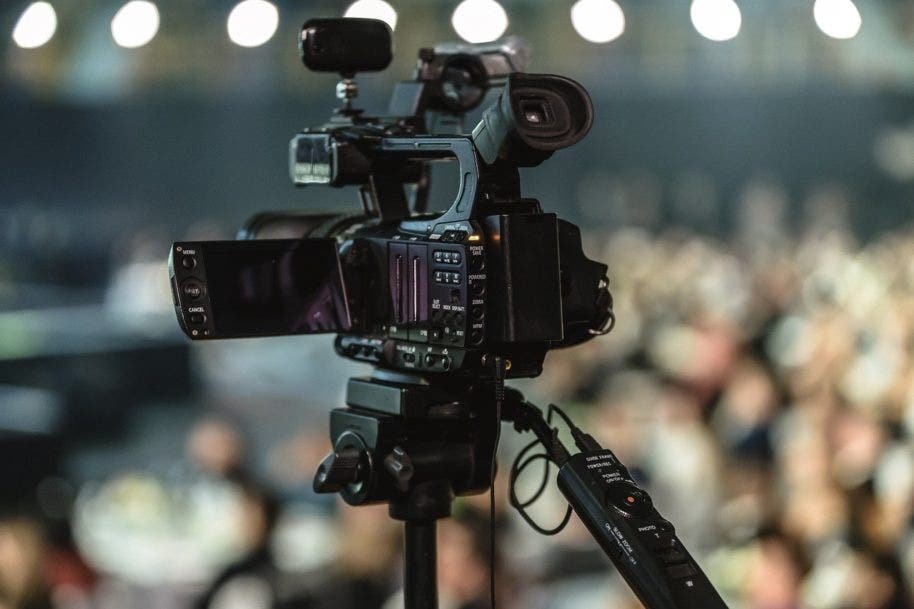
2020 will go down as the year businesses went online in a big way. And one of the biggest trends has been a move to live streaming.
In reality, all you need to live stream a video is a device with a camera (such as a mobile phone or a laptop), a streaming channel (such as Facebook or Instagram), and a solid internet connection.
But chances are, you want to look as professional as possible. And if that’s the case, some important equipment is needed for live video streaming.
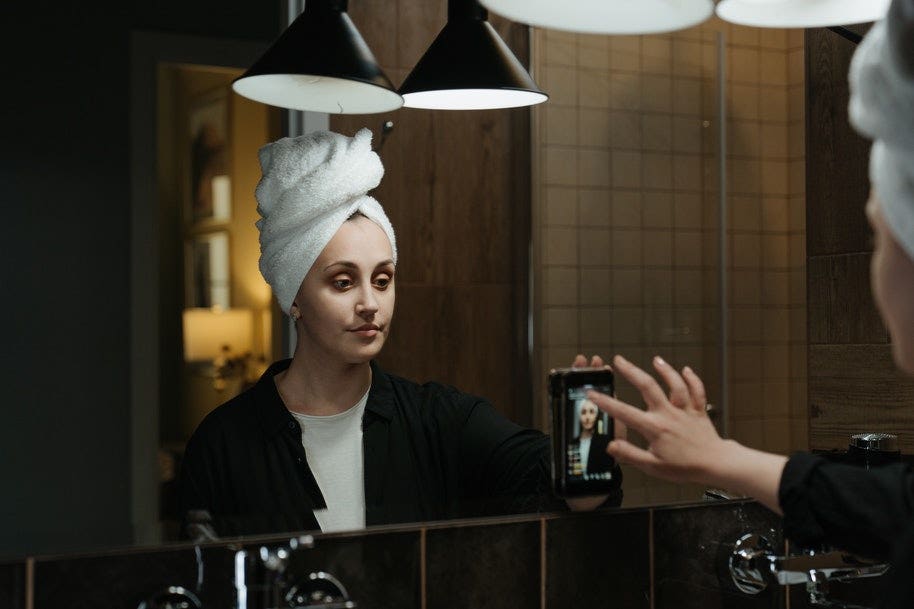
When you’re setting up a live stream, there are four main types of equipment you need:
- A device to record your video and audio. This can be one single device or two separate devices, such as a computer and a microphone.
- A video encoder. If you’re using a camera to record your live stream, you’ll need a video encoder to digitise the file. More on this below.
- A streaming channel. This is the platform you’ll use to stream the video.
- An internet connection. Most importantly of all, you need a stable and reliable internet connection if you intend to reach anyone at all!
What equipment do I need for live streaming?
A basic smartphone-and-Wi-Fi setup is great when you’re just starting out but once you start to level up, you’ll soon want a setup that delivers better audio and video quality.
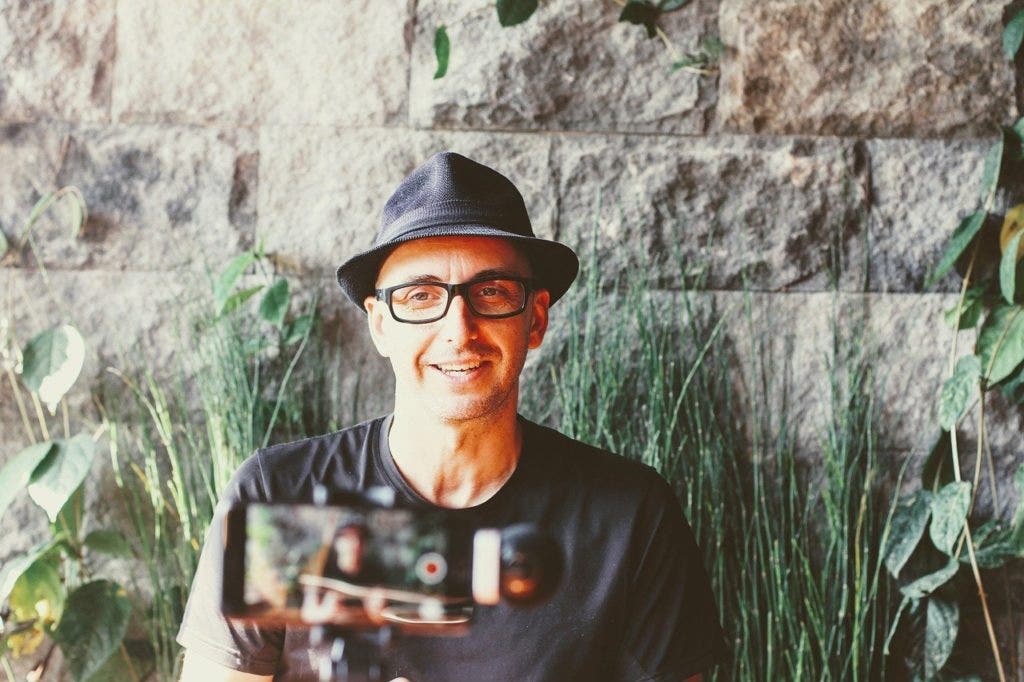
As you grow, you’ll likely want a dedicated camera or camcorder that will deliver higher resolution, as well as a tripod, a quality microphone, and a video encoder (an essential addition!).
But before we begin on the most important hardware, there are two essential things you need for a live stream: a high-speed internet connection and a streaming channel.
To start, you need a fast and reliable internet connection with enough bandwidth (between 3 and 5 Mbps) for a live stream.
You’ll also need a streaming channel, which is easy enough to find. Facebook Live, YouTube Live, Instagram Live, and many other platforms allow direct live streaming.
The best camera for live streaming

Naturally, in the beginning, the camera on your smartphone or laptop will be enough. But broadening out, you may want to give a webcam or even a digital camera a go.
Just remember that not all cameras are created equal when it comes to live streaming. Some DSLR cameras, for example, can only capture short videos at a time, which obviously won’t work if you’re planning on doing an hour-long live stream.
Our top 3 live streaming cameras for different budgets are:
The GoPro HERO9
You may not have expected us to suggest an action camera as a viable solution to your work-from-home live streaming but the GoPro HERO9 is a versatile camera that offers live HD streaming.
The front-facing screen helps you frame shots while the camera works with YouTube, Twitch, Facebook Profiles, and Facebook Pages. And it can live record video with HyperSmooth 3.0 image stabilisation.
The HERO9 is high quality and easy to use and - of the cameras we’ve listed here - one of your most affordable options.
Check out the GoPro HERO9 action camera today.
The Panasonic Lumix G7 mirrorless camera
The Panasonic Lumix G7 is guaranteed to up the production stakes in your live streaming videos. Your video quality will noticeably improve and you can adjust settings to blur your background, which adds an extra layer of professionalism.
The G7 has an articulating display that can be flipped around fully so you can set up the frame while seated in front of the camera.
This camera also has a port for an external microphone, can record in 1080p HD, and has an HDMI port to enable you to output a live video feed.
Have a look at the Panasonic Lumix G7 mirrorless camera today.
The Sigma fp full-frame camera
At the higher end of this list is a full-frame camera that’s designed to work natively as a webcam over its USB connection. That means you don’t have to worry about buying any additional equipment - like an HDMI capture card - to use it.
The camera has an incredible depth of field thanks to its full-frame sensor, which means it lends your live streams a cinematic feel. Guaranteed high image quality, even in low light.
Take a look at the Sigma fp full-frame camera today.
A laptop for the ultimate setup
If you’re moving away from the smartphone live stream, you’re going to need a laptop or computer to set up the stream. The one you already have will most likely do the job just fine but if you’re on the hunt for an updated model, make sure your laptop has:
- At least 8GB RAM
- A solid state hard drive (SSD)
- Intel i7 CPU (if you opt for a PC)
- Lots of USB ports
A high-quality microphone
Studies have shown that viewers are more critical of bad audio quality than of bad visual quality. That means your viewers are more likely to stick around if you have a jolting video than if your audio is crackling or hard to hear.
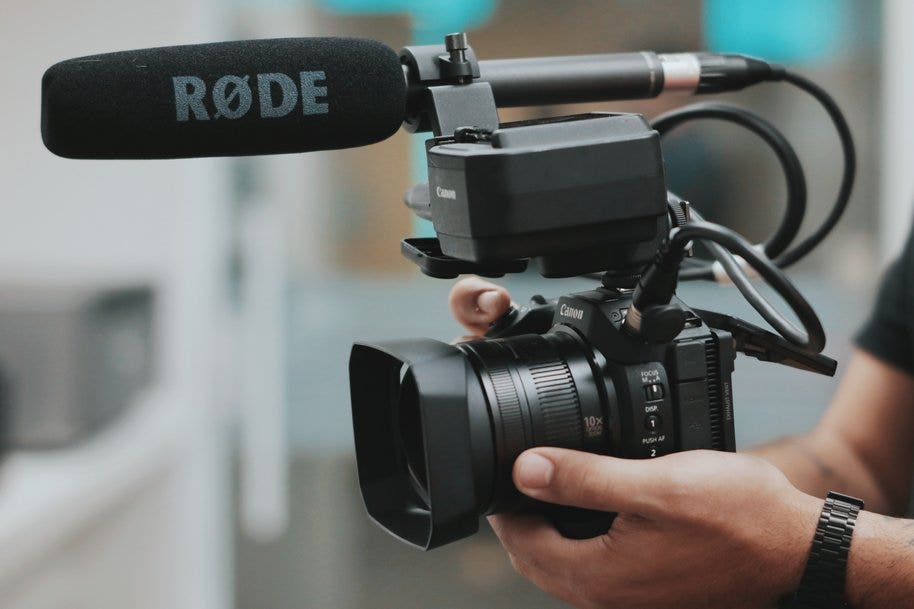
Investing in a separate, dedicated microphone is the easiest way to improve your audio quality. The built-in microphone on your laptop or camera just won’t cut it.
If your live streams are usually stationary, with you or the subject sitting behind a desk, you can use a condenser microphone with a desktop stand. Otherwise, consider investing in a clip-on lapel microphone, which allows more movement.
If you intend to include an audio mixer in your live stream setup, make sure the microphones you use have an XLR or 1/4 audio connector (USB microphones, for example, won’t work).
Our favourite microphones for live streaming include:
The RØDE Procaster microphone
Built for professionals, the RØDE Procaster broadcasts crisp audio without the ambient noise. It’s designed specifically for superior audio performance in broadcast environments that focus on the voice - such as for podcasts or live streaming.
Check out the RØDE Procaster microphone online today.
The Blue Yeticaster Streaming Bundle
What better than an audio bundle dedicated to professional streaming and podcasting?
The Blue Yeti Yeticaster Bundle - PRO comes with a USB microphone that produces incredible professional-quality audio.
With the bundle, you also get the Radius III shock mount, which reduces the noise made from shocks and vibrations. And there’s the Compass premium microphone boom arm, which contains cable management within its tube and can be operated smoothly and quietly.
Take a look at the Blue Yeticaster Bundle today.
Video encoding hardware or software
In essence, an encoder converts your videos into digital files and sends them to the web. It can be a piece of hardware or software and is pretty much essential if you intend to record on a camera or camcorder.
A hardware encoder comes with a built-in capture card that connects straight to your camera.
Encoding software will need a separate capture card that you connect on one side to your camera and on the other to your computer. But software encoders are typically more affordable and often come integrated with mixing and production tools.
An audio mixer
High-value video streaming, such as concerts, theatre plays, or surveillance, might need a multiple-camera setup.
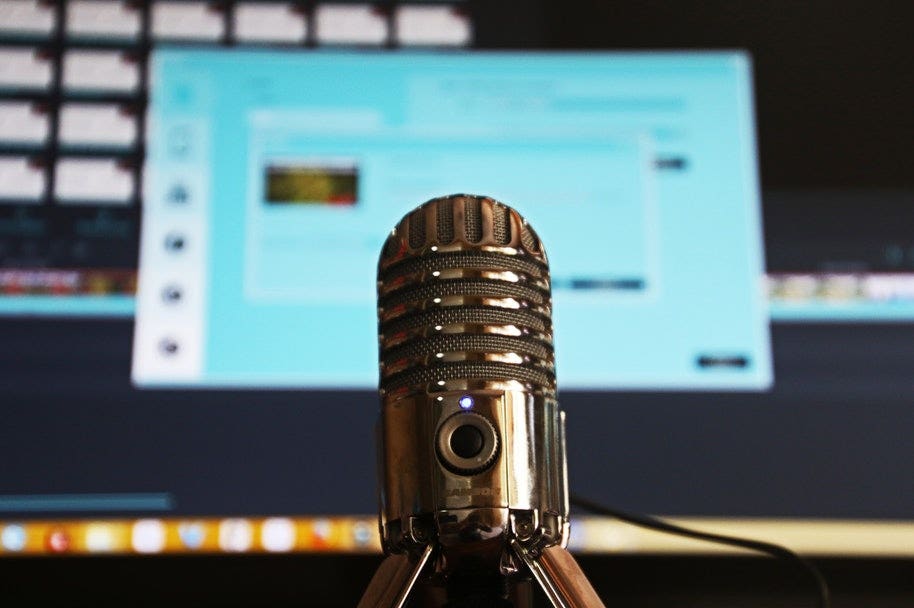
In this case, you’ll need an audio mixer. Similar to a video encoder, an audio mixer converts audio signals into a digital format for broadcasting. But it also allows you to adjust the volume levels of each microphone and audio source while streaming.
Look for a mixer with a USB output to make it easier to connect your audio to your computer. We recommend:
The Boya BY-MA2 Dual Channel XLR Audio Mixer
Designed for DSLRs and camcorders, the Boya BY-MA2 has inputs for two external XLR wireless microphone receivers or XLR shotgun mics. It also comes with a 6.35mm jack so you can connect instruments, such as guitars.
Take a look at the Boya BY-MA2 audio mixer today.
The Saramonic SR-PAX1 audio mixer
The SR-PAX1 audio mixer is a compact, two-channel active audio mixer for DSLR cameras and camcorders. This mixer records two independent sources of audio and mixes them into your camera simultaneously.
It features two XLR inputs, two 3.5mm TRS inputs, and two 1/4” inputs with a TRS output jack. It also comes with a pre-amplifier and phantom power.
Check out the Saramonic SR-PAX1 audio mixer today.
Other live streaming accessories
Live streaming requires a list of other accessories, such as cables and batteries. But two accessories stand out: a tripod and lighting equipment. These two accessories will transform the visual quality of your videos.
Tripods

Having a sturdy and reliable tripod means you can stream hands-free and deliver smooth video recording that your viewers will appreciate. A tripod also keeps your camera securely in place, so you don’t have to worry about it tipping over mid-shoot.
Check out our range of tripods online today.
Some dedicated lighting
Finally, nothing screams amateur quite so much as dodgy lighting. An easy way to level up your videos is to invest in proper lighting, especially if you’re recording yourself speaking directly to the camera from behind a desk.
There are plenty of options when it comes to lighting accessories. One of the best and most affordable accessories is a ring light
Look for a ring light with colour adjustment so you can make your live stream look as naturally lit as possible. Ring lights can be attached to a tripod or the top of a DSLR camera.
Take a look at some ring lights and other lighting accessories today.
Ready to create professional video live streams?
At Camera House, we have camera accessories to meet all your filming needs. Visit us in-store to get more advice or shop online and get free delivery for orders over $49. Check out our top live stream tips below:
